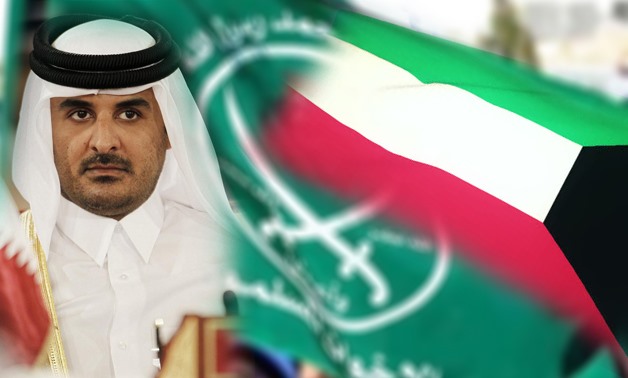
The Qatari government has been supporting and hosting figures of the Muslim Brotherhood while other countries deemed it a terrorist organization – Egypt Today photo
CAIRO – 23 July 2017: The outlawed Muslim Brotherhood spawned in international branches with offshoots taking roots across the Arab nation, including Egypt, Syria, Yemen and Kuwait.
In 2014, the Muslim Brotherhood was recognized as a terrorist organization by countries like Egypt, Saudi Arabia, UAE and Russia. But Egypt and Saudi Arabia in particular have repeatedly shed the light on Qatar’s support to the brotherhood, as part of a scheme to spread its influence.
Qatar on the other hand kept denying accusations by Arab countries that it supports and finances extremist groups.
Links with terror organizations, including the Muslim Brotherhood and Al Qaeda, however, become clearer as the time passes, showing the Qatari leadership welcoming and hosting terrorist figures and Muslim Brotherhood leaders.
As the January 25 revolution broke out in Egypt, sparking a wave of revolutions across some Arab countries including Syria and Yemen, Muslim Brotherhood dormant cells in Kuwait saw it as an opportunity to be involved in demonstrations with alliances much similar to the so-called “Arab Spring” revolution.
Brotherhood members were able to expand its influence through their aloof presence within the various institutions, with the educational sector being the most prominent. Instead, with no real social inroads, the group in Qatar naturally developed an external focus.
Palestinian immigrants played a similarly important role. Members of the Brotherhood were recruited, at least in part, for simple pragmatic purposes, as but one source of educated individuals who could fulfill a range of roles.
Doha supported the Muslim Brotherhood in countries across the region during the Arab uprisings in 2011, believing they represented the wave of the future. However, if Qatar was to have a chance to escape the diplomatic orbit of Saudi Arabia or the Gulf region, it would need links outside the region, a reason for Arabs in the wider region to consider and interact with Qatar as a country by itself.
But how the brotherhood established a branch in Kuwait? Well, the answer is that the migration of Egyptian Brotherhood members, under Abdel Nasser’s regime onwards, into the Gulf countries led to the evolution of Brotherhood branches in neighboring countries. The first Brotherhood organization in Kuwait was established in 1947 by Abdul Aziz Ali Al Mato'.
Later on in 1952, Al Mato' suggested to Hassan Al-Bana that the group’s name be changed from “Brotherhood” to the “Islamic Guidance of Society.”
With the disbandment of the Brotherhood in Egypt in 1954 by Abdel Nasser, a huge influx of Brotherhood leaders fled to Gulf countries—including Kuwait—due to its economic prosperity from the discovery of oil.
The Egyptian Brotherhood leaders and member that fled into Kuwait brought their Brotherhood influenced ideas along. Many of them were school teachers whose teachings were highly influenced by Brotherhood ideology. These school teachers soon helped Kuwait redraft their school curriculum.
According to reports circulated in Arab media outlets several years ago, Brotherhood teachers in Kuwait added texts extracted from Sayed Qutob and Hassan Al-Banna’s lessons and letters to the Kuwaiti curriculum.
“Qatar says it is doing that for Islamic reasons and that it is helping and aiding a Muslim group. In fact, however, it does not have Islamic reasons for that as it claims. It is because Qatar does not help the Brotherhood for Islam's sake but for political and strategic purposes,” Dahi Khalfan said in an interview with Al-Ahram newspaper in April 2014.
Sayed Qutob, who was executed in 1966 by the Egyptian authorities, incited violence and urged the people to defy their regimes.
Following Kuwait’s independence of British rule in 1961, the Guidance Organization was terminated and the “Social Reform Association” was established.
In the aftermath of the 1990 Iraqi invasion, the Kuwait Brotherhood underwent a period of significant change, breaking organizational ties with the international Muslim Brotherhood over Islamist support for Iraq and founding a political party, Hadas, to participate fully in Kuwaiti politics.
Hadas was established on March 31, 1991 following the liberation of Kuwait from the Iraqi invasion of the Gulf War. The groups of people who started the movement, and still control it, are Kuwaiti Islamists that follow the ideology of the Brotherhood.


Comments
Leave a Comment